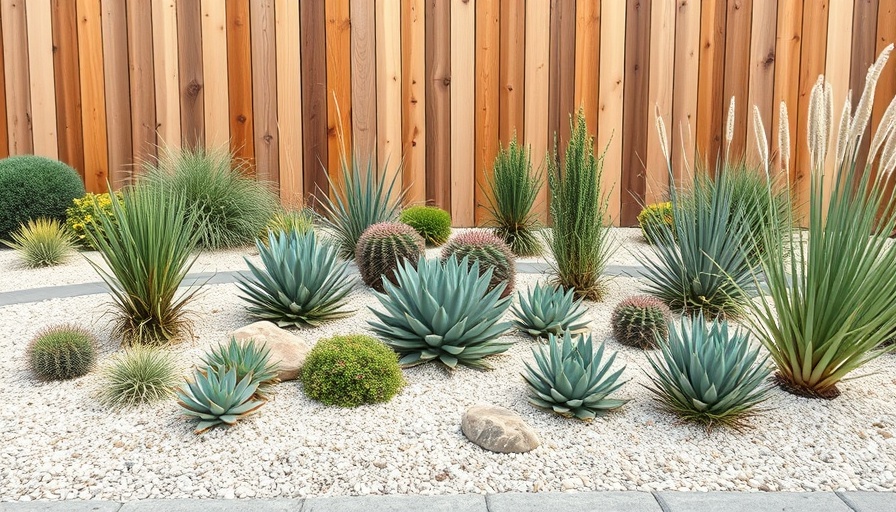
Creating a Stunning Yet Low-Maintenance Front Yard
With the busy schedules that many homeowners face, the demand for low-maintenance landscaping options has surged. Creating a stunning front yard does not mean sacrificing aesthetics for time-consuming upkeep. In this guide, we will explore innovative ideas that require less effort while maximizing visual impact, enabling you to enjoy a beautiful outdoor space without the weekly gardening chores.
Drought-Tolerant Plants: The Smart Choice
Utilizing drought-tolerant plants is one of the most effective ways to create a sustainable front yard. Hardy varieties such as succulents, ornamental grasses, and lavender not only offer a vibrant palette but thrive in dry conditions, significantly reducing the need for watering. This selection not only bolsters your yard’s aesthetic but supports conservation efforts by minimizing water usage.
The Case for Gravel and Rock Beds
Replacing traditional grassy lawns with gravel or decorative stone beds is an excellent low-maintenance option. This not only saves on mowing and watering but also creates a modern, clean look that facilitates effortless upkeep. The installation of rock beds encourages drainage and reduces the establishment of weeds, aligning with sustainability trends that advocate for reduced lawn spaces.
Choosing Native Plants for Low-Upkeep Landscaping
When selecting plants, consider those that are native to your region. They are naturally adapted to local soil and climate conditions, demanding less water and resources. Integrating native plants not only fosters local biodiversity but can enhance the resilience of your garden against pests and diseases, making them a smart choice for the environmentally conscious homeowner.
Artificial Turf: No-More Lawn Maintenance
For those who desire the lush feel of grass without the inconveniences, artificial turf is a prime solution. With a realistic appearance, it requires no mowing, watering, or fertilizing, allowing homeowners to enjoy a pristine lawn year-round. As more individuals seek to reduce maintenance and optimize their outdoor spaces, technology in lawn care continues to evolve.
Container Gardening: Flexibility and Style
Container gardens offer a unique avenue for low-maintenance landscaping. The versatility of pots and planters allows for easy rearrangement and the ability to grow low-maintenance plants without digging into the ground. This approach not only enhances your front yard’s aesthetics but also provides opportunities for seasonal creativity, allowing you to refresh your outdoor look with minimal effort.
Automating Your Garden: Drip Irrigation Systems
A drip irrigation system can significantly streamline your watering processes. By directing moisture precisely to your plants' roots, this system reduces water waste and ensures that your front yard thrives with minimal intervention. The efficiency of automated watering aligns with modern sustainability goals, making it an indispensable element of low-maintenance landscaping.
Conclusion: Transform Your Front Yard with Ease
Incorporating low-maintenance landscaping ideas into your front yard design not only beautifies your outdoor space but also aligns with contemporary sustainability practices. By choosing the right plants, materials, and technologies, you can create a stunning environment that requires minimal upkeep. Whether you're interested in conserving water, reducing labor, or simply enhancing your home's curb appeal, these suggestions offer practical solutions.
Make a change today by implementing one or more of these ideas to revolutionize your outdoor experience.
 Add Row
Add Row  Add
Add 




 Add Row
Add Row  Add
Add 

Write A Comment